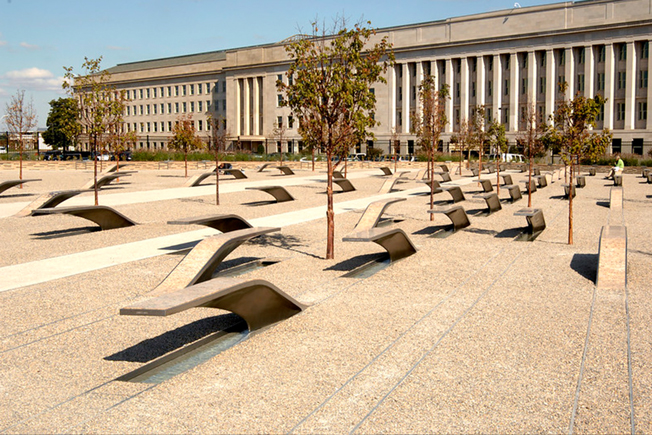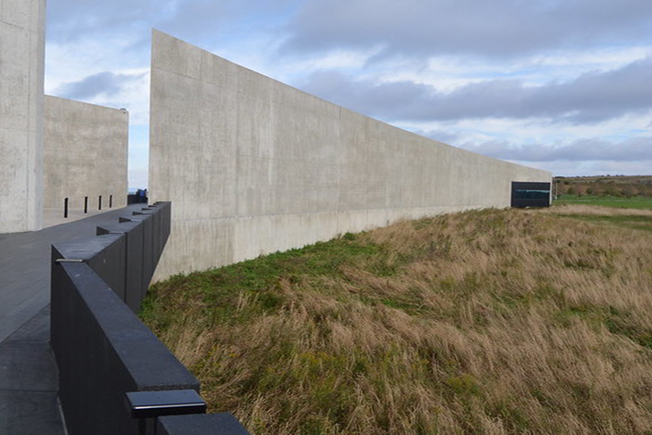Eighteen
UBC Members
Were Lost
Sean Canavan, Finish/Furniture, 39
Martin Coughlin, Interior Systems, 53
Matthew Diaz, Floorlayer, 33
Paul Gill, Carpenter, 34
Mauricio Gonzalez, Carpenter, 27
Maurice Kelly, Interior Systems, 41
Chris Kirby, Carpenter, 21
Benjamin Millman, Carpenter, 40
Joseph Mistrulli, Interior Systems, 47
Brian Monaghan, Apprentice, 21
David Ortiz, Carpenter, 37
Joseph Piskadlo, Carpenter, 48
John Rizzo, Carpenter, 50
Daniel Rosetti, Carpenter, 32
David Ruddle, Interior Systems, 31
Stephen Russell, Carpenter, 40
Erik Sanchez, Floorlayer, 41
Patrick Woods, Furniture Systems, 36
The UBC victims were members of Locals 608, 157, 2287, 45 and 15 (NJ)

Today’s youngest UBC members working in New York City don’t remember the World Trade Center’s Twin Towers that defined Manhattan’s skyline for decades.
But the 20th anniversary of the terrorist attacks on September 11, 2001, allows us to reflect on events that changed the world forever—and reinforced for many UBC members the bonds that we share as union brothers and sisters.
We remember and honor the lives of the 18 members of our union who were lost that day. Our hearts go out to the families and friends of these UBC brothers, ranging in age from 21 to 53, who left for work that morning and never returned.
Twelve of the 18 were fathers; they left behind a total of 24 children. Following the disaster, thousands of UBC members contributed to a fund that raised more than $2 million for the victims’ families.
Volunteers Raced In
We honor the many UBC members who risked their own lives and health, rushing in initially as volunteers to help with first aid, recovery and cleanup in the aftermath of the attacks in New York and at the Pentagon in Washington, D.C.
Among them was Local 608 member Hugh Smith, a native of Ireland who had helped build the Twin Towers in the 1970s. Hugh had been on-site during a terror attack 1993 and was a shop steward on the permanent crew on 9/11.
Smith had stepped out for coffee when the first tower was hit. He made it to a command center but when the tower collapsed, he couldn’t outrun the debris and dust and was buried against a fence for some time. Two days later he was back at the site helping with recovery. As Smith told Carpenter magazine in 2002:
“I took the little things in life for granted. In the snap of your fingers it could have been all taken away. The best thing for me was to come back here.”
Smith and his fellow union members spent 11 months at “the pile,” first searching for survivors and then helping to clear it for rebuilding. He retired soon after as a member of Local 157, and now lives outside of New York City.
“It wasn’t my day to die,” Smith says of his experience on 9/11. He brushes off any praise, saying that clearing the pile and helping his fellow members there was “part of the job—I was a steward, of course. The union was always just a phone call away for all of us. There was a feeling of togetherness and when our time was up, a lot of people didn’t want to leave.”
Call to Duty
We thank the many UBC members who answered the call to military service post-9/11, as new enlistees or reservists—and the local unions and members who supported them and then welcomed them back to work. The UBC General Executive Board reactivated our “In Service” membership status after 9/11, which remains an option today for members who choose to serve.
Rebuilding and Renewal
Finally, we honor all the UBC members who took part in rebuilding at the attack sites and beyond. Those who helped to reconstruct the Pentagon in record time, strengthen government facilities throughout North America against future attacks—and build the 9/11 memorial and museum, as well as the Freedom Tower at the World Trade Center, will never forget those experiences.
In addition, UBC members in the Eastern District were part of the team that constructed the Flight 93 National Memorial in Shanksville, PA, in memory of those who lost their lives during a heroic, successful effort to prevent the terrorists from attacking the U.S. Capitol.
And members in many U.S. and Canadian locations took part in the construction of local memorials to the 9/11 victims.
A common thread ran through letters, essays and poems written by UBC members and published in Carpenter magazine back then. Boston Local 275 member Laurinda Campbell’s essay from 2003 ended this way:
“When I think of the 18 Brotherhood members who perished on 9/11, I’m inspired. They died doing what they loved and were part of a union that cared about them, which is why in return we care about the union.”
Commemorative March in New York City
The New York City District Council of Carpenters is joining with HEART 9/11 for the 20th Anniversary Commemorative March of the 9/11 Recovery Workers, on Sunday September 12, to honor the 18 union carpenters who lost their lives.
HEART 9/11 is a team of first responders and building trades members created in the aftermath of 9/11 that works to help communities in need after disasters occur. Coordinated by the UBC’s Eastern District, many UBC members have taken part in HEART 9/11 response trips to Puerto Rico and elsewhere.
Learn more about the Sept. 12 march at https://www.heart911.org/events



UBC members were key to constructing the new Freedom Tower at the World Trade Center, rebuilding the damaged Pentagon, and building the Flight 93 Memorial in Shanksville, PA.

